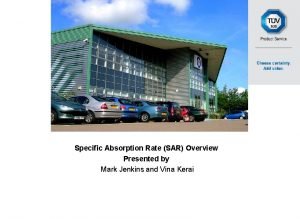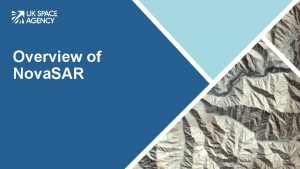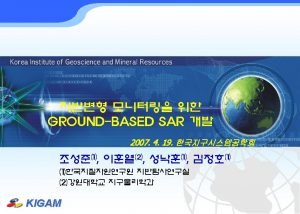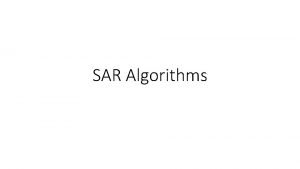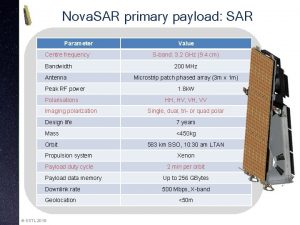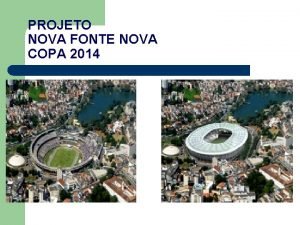Overview of Nova SAR Nova SAR programme overview





- Slides: 5

Overview of Nova. SAR

Nova. SAR programme overview • Demonstration Synthetic Aperture Radar (SAR) mission • • Designed for lower cost missions S-band (3. 1 – 3. 3 GHz) Medium resolution with wide coverage Multiple modes and multi-polarisation (non-coherent) • First satellite launching November 2017 • Polar Orbit, SSO LTAN • Data becoming available around April 2018 • UK Government involvement • Grant to support development • Will receive 15% of the data • Data freely available for R&D • Will be a UK user group • UK Space Applications Catapult • Handling user requests for imagery • Storing and archiving data • Making data available on portal 2

Mission • Design lifetime 7 years • Multiple imaging modes • From high resolution to wide area coverage • Multi-polarisations • HH, VV, VH, HV possible • Single, dual, tri and quad polar imaging available BUT with some compromise in resolution or swath • Payload duty cycle • Payload orbital duty cycle of >120 s • Multiple images or single image >800 km long • Imagery products • Expected outputs: L 1, L 2+ • L 2 include GEC (Geo-coded Ellipsoid Corrected) and Ortho-rectified products

Baseline operating modes • Based on 580 km orbit Modes Typical swath width Spatial resolution Incidence angle Number of looks 100 km 20 m 16 - 30 deg 4 Maritime Surveillance > 400 km 6 m x 13. 7 m 34. 5 - 57. 3 deg 1 Stripmap 15 - 20 km 6 m 16 - 31 deg 4 140 km 30 m 14 - 32 deg 4 Scan. SAR (wide) Scan. SAR Stripmap Maritime Scan. SAR Wide 4

AIS data • AIS: Automatic Identification System • AIS transponders on ships that automatically broadcast information - such as ship ID, position, speed, and navigational status - at regular intervals • AIS required for many vessels: including those > 300 gross tonnage and upwards engaged on international voyages, on cargo ships of 500 gross tonnage and upwards not engaged on international voyages, and on passenger ships irrespective of size • AIS data will be available from Nova. SAR • Facilitate simultaneous AIS identifications and SAR ship detections • Range of applications • Collision avoidance and vessel traffic services • Accident investigation • Fishing fleet monitoring and control 5
